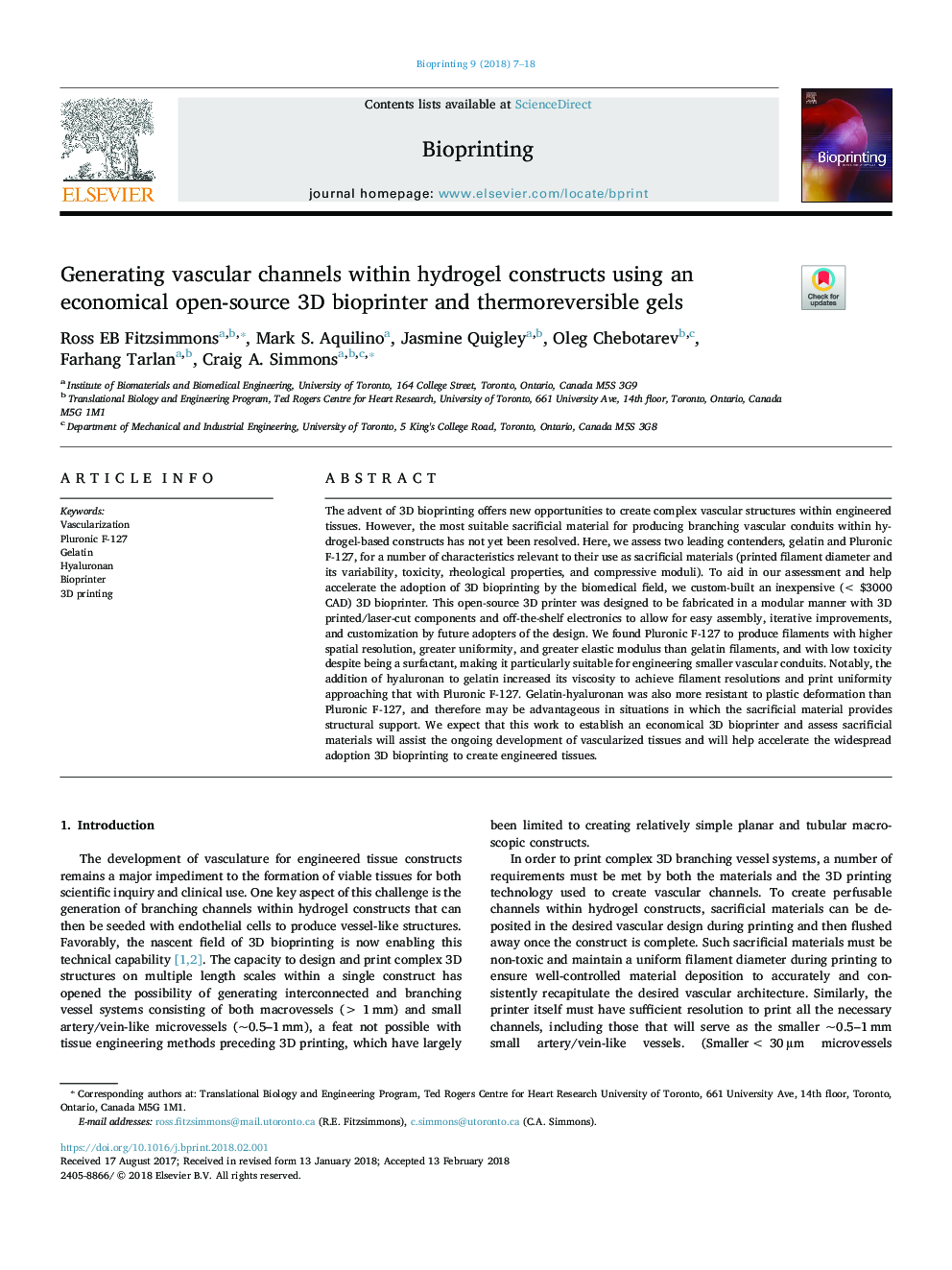| کد مقاله | کد نشریه | سال انتشار | مقاله انگلیسی | نسخه تمام متن |
|---|---|---|---|---|
| 7228848 | 1470888 | 2018 | 12 صفحه PDF | دانلود رایگان |
عنوان انگلیسی مقاله ISI
Generating vascular channels within hydrogel constructs using an economical open-source 3D bioprinter and thermoreversible gels
دانلود مقاله + سفارش ترجمه
دانلود مقاله ISI انگلیسی
رایگان برای ایرانیان
کلمات کلیدی
موضوعات مرتبط
مهندسی و علوم پایه
سایر رشته های مهندسی
مهندسی پزشکی
پیش نمایش صفحه اول مقاله

چکیده انگلیسی
The advent of 3D bioprinting offers new opportunities to create complex vascular structures within engineered tissues. However, the most suitable sacrificial material for producing branching vascular conduits within hydrogel-based constructs has not yet been resolved. Here, we assess two leading contenders, gelatin and Pluronic F-127, for a number of characteristics relevant to their use as sacrificial materials (printed filament diameter and its variability, toxicity, rheological properties, and compressive moduli). To aid in our assessment and help accelerate the adoption of 3D bioprinting by the biomedical field, we custom-built an inexpensive (<â¯$3000 CAD) 3D bioprinter. This open-source 3D printer was designed to be fabricated in a modular manner with 3D printed/laser-cut components and off-the-shelf electronics to allow for easy assembly, iterative improvements, and customization by future adopters of the design. We found Pluronic F-127 to produce filaments with higher spatial resolution, greater uniformity, and greater elastic modulus than gelatin filaments, and with low toxicity despite being a surfactant, making it particularly suitable for engineering smaller vascular conduits. Notably, the addition of hyaluronan to gelatin increased its viscosity to achieve filament resolutions and print uniformity approaching that with Pluronic F-127. Gelatin-hyaluronan was also more resistant to plastic deformation than Pluronic F-127, and therefore may be advantageous in situations in which the sacrificial material provides structural support. We expect that this work to establish an economical 3D bioprinter and assess sacrificial materials will assist the ongoing development of vascularized tissues and will help accelerate the widespread adoption 3D bioprinting to create engineered tissues.
ناشر
Database: Elsevier - ScienceDirect (ساینس دایرکت)
Journal: Bioprinting - Volume 9, March 2018, Pages 7-18
Journal: Bioprinting - Volume 9, March 2018, Pages 7-18
نویسندگان
Ross EB Fitzsimmons, Mark S. Aquilino, Jasmine Quigley, Oleg Chebotarev, Farhang Tarlan, Craig A. Simmons,